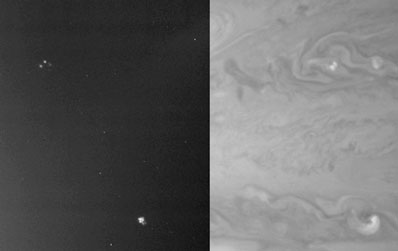Brian Stertz
EF5
Exerpt from Space.com:
Scientists are tracking the strongest lightning storm ever detected at Saturn. The storm is larger than the continental United States, with electrical activity 1,000 times stronger than the lightning on Earth....
The storm is about 2,175 miles wide (3,500 kilometers).
Now that is what I call a supercell...maybe a new frontier for chasing ??!!
Just have to watch out for those toxic "Non-Allsups related" gases and acid precip (?). I wonder what the skew t's look like?
Scientists are tracking the strongest lightning storm ever detected at Saturn. The storm is larger than the continental United States, with electrical activity 1,000 times stronger than the lightning on Earth....
The storm is about 2,175 miles wide (3,500 kilometers).
Now that is what I call a supercell...maybe a new frontier for chasing ??!!
Just have to watch out for those toxic "Non-Allsups related" gases and acid precip (?). I wonder what the skew t's look like?

